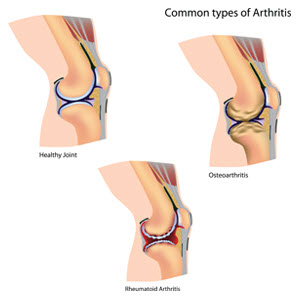Arthritis: Risks, Management and Prevention
Oct 12, 2015
9658 Views
Bones form the main framework of the human body. A body is as strong and resilient as its main frame – once that is compromised, there is little hope of accurate mobility and stability. A healthy bone structure as advised by many medical personnel requires high calcium, regular exercise and good diet. With all this information being provided, we still are suffering from several bone related diseases – the most prominent being – Arthritis.
Arthritis affects 15% people, i.e., over 180 million people in India. This prevalence being higher than many other diseases such as diabetes, AIDS and cancer.
We are curious when we see our grandparents having joint pain, complaining about excess movement, the inability to walk up and down the stairs – and wonder about our future. Some of us banish the thought straight away while a few others start researching. Here is some information I came up with: ‘Typically, pain, aching, stiffness and swelling in and around one or more joints characterize rheumatic conditions. The symptoms can develop gradually or suddenly. Certain rheumatic conditions can also involve the immune system and various internal organs of the body.’
This disease cannot be pinned down to one cause; the cause depends on the type or form of arthritis. Some known causes for arthritis include: Injury – leading to degenerative arthritis, abnormal metabolism – leading to gout, hereditary – such as in osteoarthritis, infections – as seen in Lyme disease, and overactive immune system – such as Rheumatoid Arthritis (RA) and Systemic lupus erythematosus (SLE).
Common Types of Arthritis

Osteoarthritis
Affecting millions in India, this form of arthritis is commonly seen in people aged over 60 years. Dr Shishir Rastogi, professor, orthopaedics, at AIIMS mentioned Time of India, September 2007: “There are many reasons for the high prevalence of osteoarthritis in India. Genetic is the strongest reason which makes us more pre-disposed to it.”
The genetic basIs of this disease are not seen following routine patterns of mendelian inheritance and are hence concluded to be related to alterations in multiple genes. At the moment, the genetic mechanisms of this disease are not completely known, however, it is quite evident from clinical, radiological, and pathological manifestations that expression levels of several genes are altered. Currently the only treatment of end stage osteoarthritis of one of the most vital body parts (the knee) is a total knee replacement (TKR), which is an effective procedure and approximately 64,000 are performed each year in the United Kingdom alone.
Rheumatoid Arthritis
Rheumatoid Arthritis (RA) RA is an autoimmune condition whereby the inflammatory process primarily affects the lining of the joints (synovial membrane), but it can also affect other organs. The inflamed synovium leads to cartilage and bone erosion and at times, joint deformity. Pain, swelling and redness are common joint manifestations. It causes premature mortality, disability and compromises the comfort quality of life. The onset of RA can occur at any age and is associated with exhaustion and prolonged stiffness after rest. Individuals with RA have a more severe functional status than those with osteoarthritis.
The possibility that RA might have a genetic component was considered in 1806 by William Heberden. Today, it is well established that there are key genetic risk factors, such as the shared epitope human leukocyte antigen (HLA) alleles. Genome-wide association studies (GWASs) combined with High throughput Single Nucleotide Polymorphism (SNP) genotyping technologies have allowed investigators to study common variation across 100,000–1 0,00,000 SNPs efficiently. These can be further used to do an unbiased investigation for novel risk loci for OA as well.
Risk Factors for Arthritis
Risk factors for arthritis include:
- High BP
- Physical inactivity
- High cholesterol
- Obesity
- Smoking
Prevention and Management
The diseases cannot be cured permanently, but managed to a certain extent with periodic workout with weights, proper diet, avoiding sports injuries through proper equipment, rest and proper sleep.
Conclusion
All in all, Arthritis is a complex disease involving several pathways within the innate and the adaptive immune system. Highly advanced gene based studies will also take a few years minimum to understand the mechanism behind this degenerative disease. Hence, with so much to lose due to one disorder – one must be fully prepared and aware of its risk factors, symptoms to prevent or detect an early onset. Healthy bones are a necessity for today’s lifestyle – truly ‘the heart of the body matter’!
Worried About Arthritis?
We understand that watching a parent or a close relative suffer from arthritis and worrying about inheriting it can actually cause sleepless nights. Our suggestions to relieve your fears:
Genomepatri: Apart from 100 other conditions, Genomepatri offers once-in-a-lifetime solutions to a strong musculoskeletal system. Understand your genetic predisposition to bone mineral density, risks to SLE, RA, and osteoarthritis, as well as the predisposition to associated risk factors. Our genetic counselors correlate report findings with health history to give you an action plan to strengthen your bones and muscles.
Genetic counselling: A session with our genetic counsellor will help you understand the role of your health history – family health, medical history, and lifestyle – in your genetic predisposition to SLE, RA, and osteoarthritis.
To find out more, write to info@mapmygenome.in or call 1800-102-4595. Today!
About the Author
Dr. Pallavi Jain is part of the Scientific Team at Mapmygenome. She has a Bachelors Degree in Biochemistry with Genetics and a PhD in Molecular Medicine (UK). She recently completed an intensive course in IVF from Origio, Mumbai. She enjoys swimming and reading.

